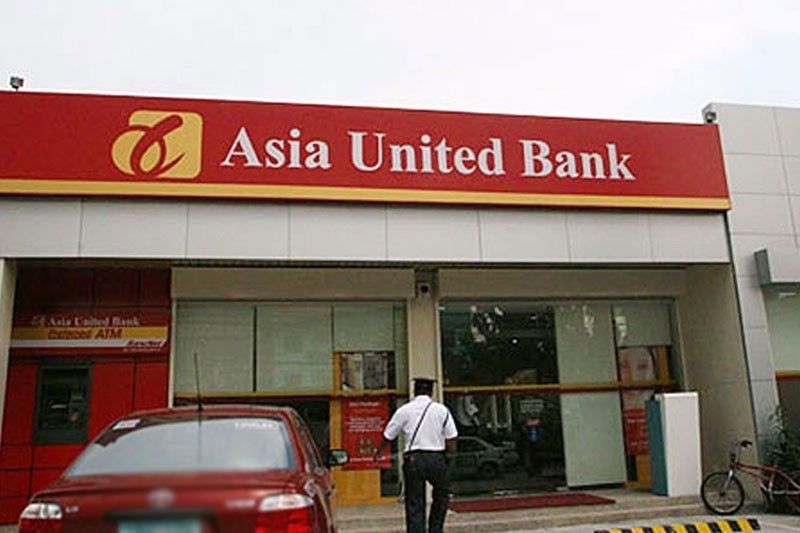In the dynamic landscape of modern commerce, businesses, regardless of their size, frequently encounter opportunities for growth, expansion, or periods requiring strategic financial injection. Asia United Bank (AUB) stands as a dedicated partner to enterprises, offering a robust portfolio of AUB Commercial Loans designed to cater to diverse business financing needs. This comprehensive guide will explore the various business financing options available through AUB, detailing their features, benefits, and how they empower small and medium-sized enterprises (SMEs) as well as larger corporations to achieve their financial objectives and sustain growth in the competitive market.
Understanding AUB Commercial Loans: A Partner for Business Growth
AUB Commercial Loans encompass a range of financial products extended to businesses for various purposes, distinct from personal or consumer loans. These loans are structured to support operational needs, capital expenditures, expansion plans, and liquidity management. AUB’s approach focuses on understanding the specific requirements of each business, providing tailored solutions rather than a one-size-fits-all approach.

Key Objectives of AUB Commercial Loans:
- Capital Expenditure (CapEx): Funding for the acquisition of long-term assets like property, plant, and equipment.
- Working Capital: Ensuring sufficient liquidity for day-to-day operations, inventory, and short-term liabilities.
- Business Expansion: Financing for new branches, market entry, product development, or increased production capacity.
- Project Financing: Loans for specific large-scale projects with defined revenue streams.
- Trade Financing: Facilitating import/export activities and managing international trade risks.
- Debt Refinancing/Restructuring: Optimizing existing debt structures for better terms or consolidated payments.
Types of AUB Commercial Loans: Tailored Solutions
AUB offers a variety of commercial loan products, each designed for a specific business need. While the exact product names and features may evolve, the core categories generally include:
1. Term Loans
- Purpose: Ideal for long-term investments such as purchasing fixed assets (machinery, equipment, vehicles, real estate), funding major expansion projects, or significant business acquisitions.
- Features:
- Fixed Repayment Schedule: Borrowers repay the loan in equal monthly, quarterly, or semi-annual installments over a predetermined period.
- Loan Term: Typically ranges from 1 year to 10 years or more, depending on the purpose and asset life.
- Interest Rates: Can be fixed or variable. Fixed rates provide certainty, while variable rates may fluctuate with market conditions.
- Collateral: Usually secured by the assets being acquired (e.g., machinery, real estate) or other business assets.
- Benefits: Predictable payments, suitable for large capital outlays, and longer repayment periods reduce the burden of high monthly amortizations.
2. Revolving Credit Line / Credit Line Facility
- Purpose: Primarily for short-term working capital needs, covering fluctuations in cash flow, managing inventory, or bridging gaps in receivables.
- Features:
- Flexible Access to Funds: Businesses can draw funds up to an approved limit, repay, and redraw again as needed, without needing to re-apply each time.
- Interest on Utilized Amount Only: Interest is charged only on the portion of the credit line that is actually used.
- Renewable: Typically reviewed and renewable annually.
- Benefits: High flexibility, ideal for seasonal businesses or those with irregular cash flow, and cost-effective as interest is only paid on utilized funds.
3. Trade Finance Facilities (Import/Export Financing)
- Purpose: To facilitate international trade transactions, manage risks, and provide liquidity for import and export activities.
- Features:
- Letters of Credit (LCs): A bank guarantee to the seller that payment will be made, provided certain conditions are met. This reduces risk for both parties.
- Trust Receipts: Allows importers to take possession of goods before payment, with the bank retaining ownership until the goods are sold.
- Export Packing Credits: Pre-shipment financing for exporters to purchase raw materials or manufacture goods.
- Bills Purchase/Discounting: Purchase of trade bills (e.g., receivables from exports) at a discount to provide immediate cash flow.
- Benefits: Reduces trade risks, improves cash flow for importers and exporters, and facilitates global business operations.
4. Project Finance
- Purpose: Tailored financing for large-scale, long-term infrastructure, industrial, or real estate projects, where repayment is primarily from the cash flow generated by the project itself.
- Features: Highly structured, often involving multiple lenders (syndicated loans), and complex risk allocation.
- Benefits: Enables the undertaking of massive projects that would otherwise be impossible to finance through traditional balance sheet lending.
5. Other Specialized Loans (Examples)
- SME Loans: Dedicated products with potentially more flexible requirements for small and medium-sized enterprises.
- Franchise Loans: Financing specifically for individuals or entities looking to acquire a franchise.
- Vehicle / Equipment Loans: Similar to auto loans but for commercial vehicles or heavy equipment.
Eligibility Criteria for AUB Commercial Loans
AUB assesses businesses for commercial loans based on their financial health, operational stability, and repayment capacity. General eligibility criteria include:

- Business Registration & Operations:
- Duly registered with the Securities and Exchange Commission (SEC) for corporations/partnerships or Department of Trade and Industry (DTI) for sole proprietorships.
- Valid Mayor’s Permit / Business Permit.
- Must have been in profitable operation for a minimum period (e.g., at least 2-3 years), demonstrating stability and a track record.
- Financial Soundness:
- Positive Financial Performance: Demonstrated profitability and healthy cash flow.
- Strong Balance Sheet: Sufficient assets and manageable liabilities.
- Acceptable Debt-to-Equity Ratio: Indicating a healthy capital structure.
- Credit Standing:
- Clean credit history for the business and its principal owners/officers. No derogatory records, loan defaults, or bounced checks.
- Management Capability:
- Competent and experienced management team.
- Collateral:
- While some loans may be unsecured (especially small lines of credit for very strong clients), most commercial loans require collateral. Acceptable collateral includes:
- Real estate (land and/or buildings).
- Machinery and equipment.
- Inventory and receivables (for working capital loans/lines).
- Deposits/financial instruments.
- Chattel mortgage on vehicles.
- While some loans may be unsecured (especially small lines of credit for very strong clients), most commercial loans require collateral. Acceptable collateral includes:
Application Process for AUB Commercial Loans: Step-by-Step
The commercial loan application process is more detailed than consumer loans due to the complexity of business financials.
Phase 1: Preparation and Initial Consultation
- Assess Your Needs: Clearly define the purpose of the loan, the exact amount needed, and your repayment capacity.
- Prepare a Business Plan (for new/major projects): Outline your business model, market analysis, financial projections, and how the loan will be repaid.
- Gather Required Documents: This is extensive for commercial loans.
- Business Registration Documents: SEC Certificate of Incorporation/Partnership (with Articles of Incorporation/By-laws, latest GIS) or DTI Certificate (for sole proprietors).
- Business Permits: Latest Mayor’s Permit, Barangay Clearance.
- Audited Financial Statements (AFS): For the last 2-3 years, stamped “Received” by BIR.
- Income Tax Returns (ITR): For the last 2-3 years (both corporate and proprietor/partners).
- Bank Statements: For the last 6-12 months from all operating bank accounts.
- Company Profile: Including history, management team, organizational structure, products/services, and major clients/suppliers.
- Collateral Documents: Copies of TCTs/CCTs (for real estate), OR/CR (for vehicles), Deed of Assignment (for receivables), etc.
- Company Profile / Latest General Information Sheet (GIS): For corporations.
- Board Resolution / Secretary’s Certificate: Authorizing the company to borrow and designating signatories.
- IDs of Principal Stockholders/Officers: Photocopies of 2 valid IDs.
Phase 2: Application Submission and Evaluation
- Submit Application: Present your complete application package to an AUB branch or a dedicated Commercial Lending Officer.
- Interview and Site Visit: AUB will conduct interviews with key management and may perform a site visit to your business premises to verify operations.
- Financial Analysis and Credit Investigation: AUB’s credit analysts will meticulously review your financial statements, bank records, and projections. A comprehensive credit check on the company and its principals will be performed.
- Collateral Appraisal: For secured loans, AUB will arrange for a professional appraisal of the offered collateral to determine its fair market value.
- Credit Committee Review: The loan application is presented to AUB’s Credit Committee for final review and approval.
- Loan Approval: If approved, AUB will issue a Letter of Offer/Approval outlining the loan amount, interest rate, terms, conditions precedent for release, and fees.
Phase 3: Loan Documentation and Release
- Acceptance of Offer: You formally accept the loan offer by signing the Letter of Offer.
- Compliance with Conditions Precedent: Fulfill all conditions outlined in the approval letter (e.g., submission of original collateral documents, insurance, clearances).
- Signing of Loan Documents: Execute the loan agreement, promissory note, mortgage documents, and other legal instruments.
- Loan Release: Upon satisfying all conditions and completion of documentation, the loan proceeds are disbursed to your business account.
Tips for Securing an AUB Commercial Loan
- Prepare a Solid Business Plan: Especially for new ventures or significant expansions, a well-thought-out plan demonstrates your understanding of the business and repayment strategy.
- Maintain Excellent Financial Records: Clean, updated, and well-audited financial statements are critical. Banks rely heavily on these.
- Manage Your Cash Flow: Demonstrate consistent positive cash flow to show your ability to service debt.
- Build a Relationship with AUB: Having an existing business account or a positive banking history with AUB can be beneficial.
- Understand All Terms: Carefully review all loan terms, interest rates (effective vs. nominal), fees, and repayment schedules before signing.
- Be Proactive: Respond promptly to any requests for additional information from AUB to avoid delays.
- Seek Professional Advice: Consult with financial advisors or accountants to strengthen your application and financial projections.
Conclusion
AUB Commercial Loans serve as a powerful catalyst for business growth and sustainability in the Philippines. By offering a diverse range of financing options, from flexible working capital lines to long-term asset acquisition funds, AUB empowers enterprises to seize opportunities and overcome financial challenges. A thorough understanding of the available products, stringent eligibility criteria, and the detailed application process will enable businesses to effectively partner with AUB, securing the necessary capital to thrive in an ever-evolving economic landscape.













